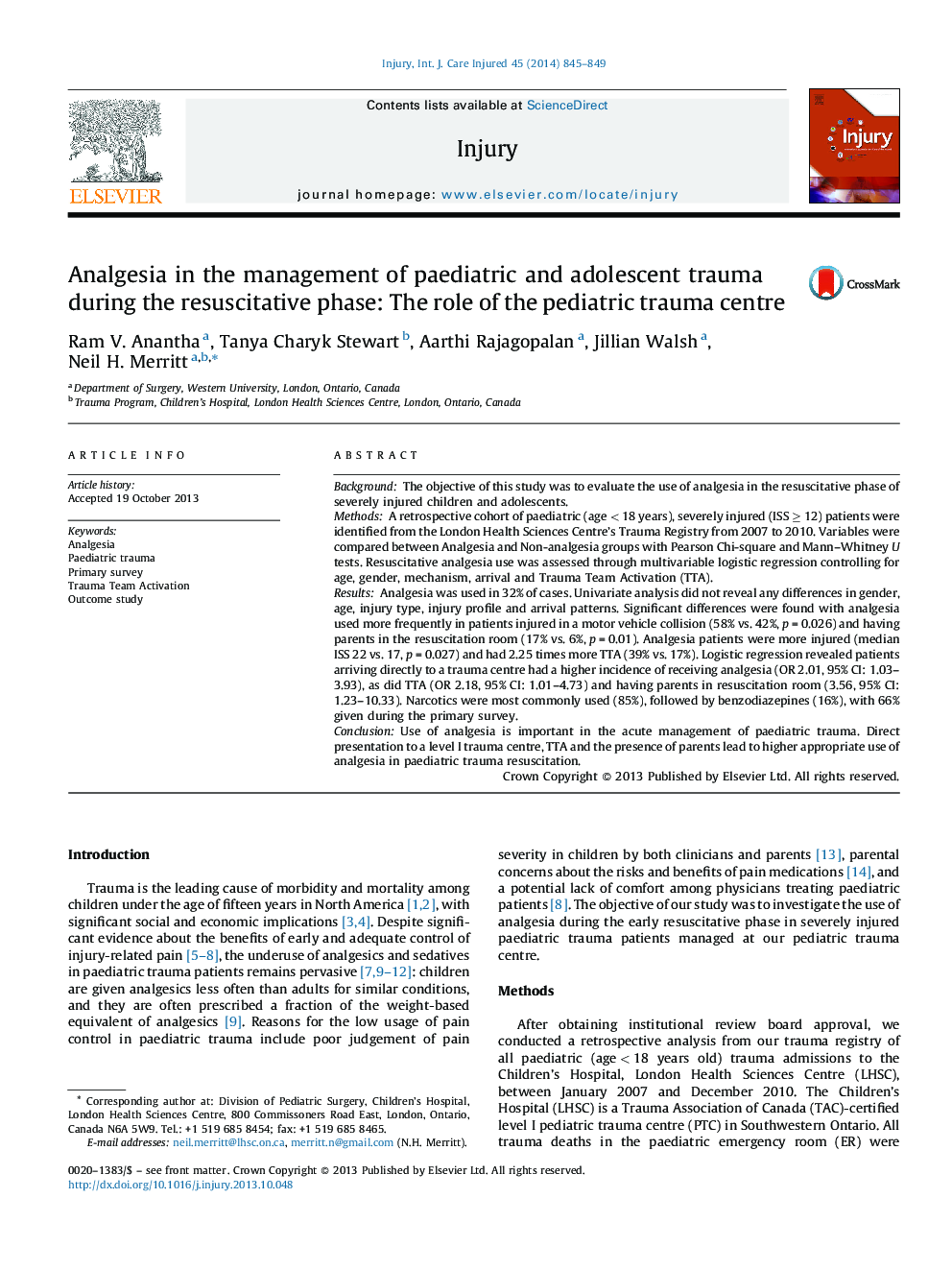| Article ID | Journal | Published Year | Pages | File Type |
|---|---|---|---|---|
| 3239616 | Injury | 2014 | 5 Pages |
BackgroundThe objective of this study was to evaluate the use of analgesia in the resuscitative phase of severely injured children and adolescents.MethodsA retrospective cohort of paediatric (age < 18 years), severely injured (ISS ≥ 12) patients were identified from the London Health Sciences Centre's Trauma Registry from 2007 to 2010. Variables were compared between Analgesia and Non-analgesia groups with Pearson Chi-square and Mann–Whitney U tests. Resuscitative analgesia use was assessed through multivariable logistic regression controlling for age, gender, mechanism, arrival and Trauma Team Activation (TTA).ResultsAnalgesia was used in 32% of cases. Univariate analysis did not reveal any differences in gender, age, injury type, injury profile and arrival patterns. Significant differences were found with analgesia used more frequently in patients injured in a motor vehicle collision (58% vs. 42%, p = 0.026) and having parents in the resuscitation room (17% vs. 6%, p = 0.01). Analgesia patients were more injured (median ISS 22 vs. 17, p = 0.027) and had 2.25 times more TTA (39% vs. 17%). Logistic regression revealed patients arriving directly to a trauma centre had a higher incidence of receiving analgesia (OR 2.01, 95% CI: 1.03–3.93), as did TTA (OR 2.18, 95% CI: 1.01–4.73) and having parents in resuscitation room (3.56, 95% CI: 1.23–10.33). Narcotics were most commonly used (85%), followed by benzodiazepines (16%), with 66% given during the primary survey.ConclusionUse of analgesia is important in the acute management of paediatric trauma. Direct presentation to a level I trauma centre, TTA and the presence of parents lead to higher appropriate use of analgesia in paediatric trauma resuscitation.
